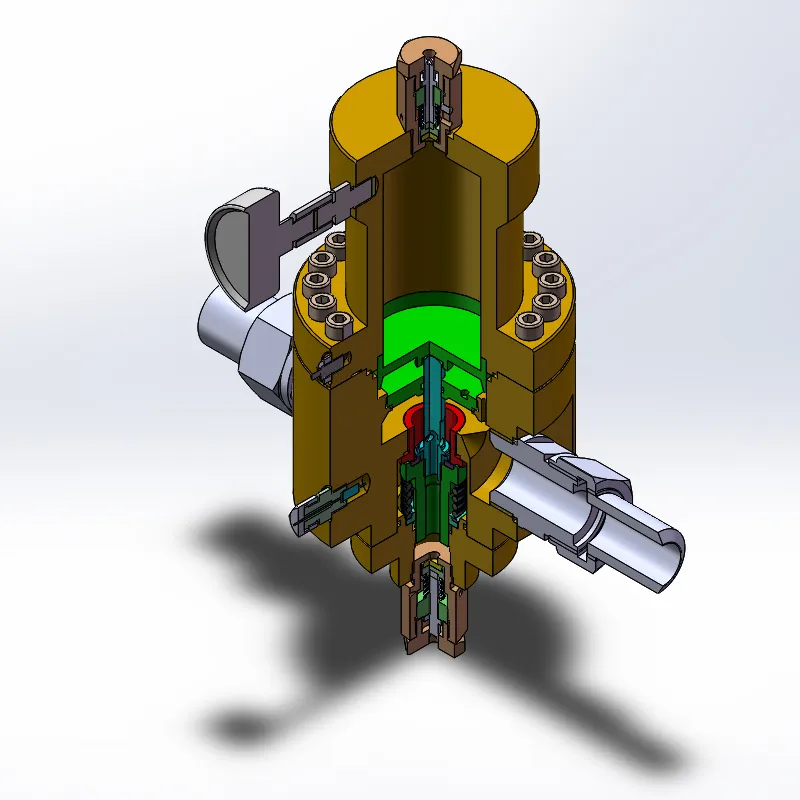
Nov . 05, 2024 08:58
Back to list
high pressure regulators
Understanding High Pressure Regulators Function, Importance, and Application
High pressure regulators play a crucial role in a wide range of industrial and commercial applications. They are designed to control and reduce the pressure of gases and liquids within systems, allowing for safe and efficient operation. By managing pressure levels, these regulators ensure that devices and equipment operate within their specified limits, thus enhancing their longevity and performance.
The Function of High Pressure Regulators
At its core, a high pressure regulator serves as a valve that adjusts gas or liquid flow rates based on variations in demand and inlet pressure. The primary function is to convert high-pressure gas from a storage tank or cylinder into a lower, more manageable pressure suitable for various applications. For instance, welding, medical gas supply, and research laboratories frequently use high pressure regulators to provide a consistent and reliable pressure output.
These regulators work by responding to changes in downstream pressure. When downstream pressure falls below a certain level, the regulator will open to allow more gas to flow through, thereby increasing the pressure. Conversely, when the desired pressure is achieved, the regulator will close partially or entirely to maintain that level. This dynamic control mechanism allows for precision handling of the media being regulated.
Types of High Pressure Regulators
High pressure regulators come in various designs tailored to different applications. The two most common types are single-stage and dual-stage regulators.
- Single-stage regulators are generally simpler and less expensive. They are suitable for applications where the pressure drop between the supply and delivery is minimal. However, they can exhibit pressure fluctuations when the supply pressure changes dramatically.
- Dual-stage regulators offer enhanced stability and accuracy in pressure regulation. They consist of two stages of pressure reduction, providing a more consistent output even when the inlet pressure fluctuates significantly. This makes them ideal for sensitive applications, such as in laboratories or high-precision manufacturing processes.
Importance of High Pressure Regulators
high pressure regulators

The importance of high pressure regulators cannot be overstated, especially in industries where safety and efficiency are paramount. Without these regulators, systems could experience uncontrolled pressure rises that might lead to equipment failures, accidents, or even catastrophic explosions. For instance, in the medical field, high pressure regulators are essential for controlling the supply of oxygen and other gases to patients. Any fluctuation in pressure could pose serious health risks.
Moreover, high pressure regulators contribute to resource optimization. By ensuring that gases and liquids are used efficiently, these regulators minimize waste and reduce operational costs. They also extend the life of downstream equipment, as consistent pressure levels lessen wear and tear on mechanisms.
Applications of High Pressure Regulators
High pressure regulators find applications across various sectors, including
- Industrial Manufacturing In industries like petrochemicals, high pressure regulators control the flow of gases during the production process, ensuring safety and efficiency.
- Welding and Cutting In the welding industry, regulators manage the pressure of gases like acetylene and oxygen, providing a constant flame that is crucial for effective welding operations.
- Medical Fields Regulators are vital in hospitals and clinics for the supply of anesthetic gases and oxygen, significantly impacting patient care and safety.
- Research Laboratories In laboratories, precision is key. High pressure regulators help maintain accurate pressure levels in experimental setups, ensuring reliable results.
Conclusion
High pressure regulators are indispensable components in many systems that rely on precise gas and liquid control. Their ability to maintain steady pressure outputs not only enhances safety but also improves efficiency and resource management across various industries. As technology advances, innovations in the design and functionality of high pressure regulators will continue to evolve, further expanding their applications and effectiveness. Understanding the intricacies of these devices will be vital for professionals in engineering, manufacturing, and healthcare, ensuring they harness their full potential for safer and more efficient operations.
Latest news
-
Safety Valve Spring-Loaded Design Overpressure ProtectionNewsJul.25,2025
-
Precision Voltage Regulator AC5 Accuracy Grade PerformanceNewsJul.25,2025
-
Natural Gas Pressure Regulating Skid Industrial Pipeline ApplicationsNewsJul.25,2025
-
Natural Gas Filter Stainless Steel Mesh Element DesignNewsJul.25,2025
-
Gas Pressure Regulator Valve Direct-Acting Spring-Loaded DesignNewsJul.25,2025
-
Decompression Equipment Multi-Stage Heat Exchange System DesignNewsJul.25,2025

